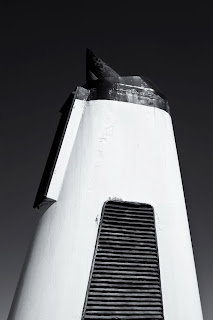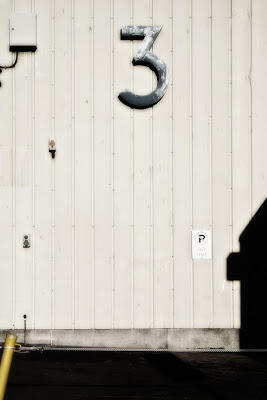Saturday, 2 November 2013
LA Confidential and California Dreaming
Some images from our recent trip to California. LA cool at its finest. Northern California bathed in soft golden light. Hipsters, modernist architecture, cocktails, bookstores, vineyards, mountains, government lockdowns, road trips, restaurants, Abbott and Kinney Street, Santa Monica, the Stahl House, Beverley Hills, Sonoma, Marin, Mendocino, Napa, Mid Century style, City Light Bookstore, Cafe Vesuvio, the Beerworks in Mill Valley, Beats, freeways…...
Tuesday, 20 August 2013
Duo have good form-Take Five photos and review
Photos and review in the Canberra Times arts pages.
http://www.canberratimes.com.au/act-news/tale-of-two-talents-20130819-2s6ge.html
and hard copy on page 8
notice and review in the Canberra City news by Helen Musa
http://citynews.com.au/2013/subtle-ceramics-and-photographs-at-form/
http://www.canberratimes.com.au/act-news/tale-of-two-talents-20130819-2s6ge.html
and hard copy on page 8
notice and review in the Canberra City news by Helen Musa
http://citynews.com.au/2013/subtle-ceramics-and-photographs-at-form/
Sunday, 18 August 2013
Terry Moore's critique of the exhibition Coast-with thanks to Terry for sending this through for the blog
Coast-a series
of images
I am reminded of my own empathy to the
seaside, my search for detail that accompanies explorations along the shore. A
shell on the beach that needs collecting, the plants that grow in unlikely
places, the sand and water patterns, the rock pool with its diverse life,
colour and shapes. All these things are here. In looking at this work I am reminded of this
but also of the work of Karl Blossfeldt and the way he introduced such detail
to us in the early part of the last century. In fact Peter’s ‘Sea Patterns 1, 2
& 3’ have a sense of Blossfeldt’s Photogravure images without having much
to do with his images’ content or his medium. Blossfeldt produced a fascinating series of
plant photographs, which were the essence of a modernist view of such forms. He
recognized how photographs can function as an aid to memory and pursued purity
and truth in his images with a modernist’s passion.
Life depends in the main on movement and the
frozen moment in ‘Sea Patterns’ are able to suggest to us the movement that is
taking place. A photo is able to suspend in time a precise moment yet this
moment itself is timeless. Blossfeldt’s photographs of plant stems such as ‘Impatiens
glanduligera’ and ‘Cornus nuttalli’ appear like wrought iron castings; we need
reminding that they are in fact plants. Interestingly enough Blossfeldt was
originally apprenticed as a decorative cast iron worker. His isolation of seed, flower and leaf
segments draw us into a world that we could be unaware of at least in its
detailed form. Blossfeldt’s images inform us of the fine structure of a plant
or how they become a pattern of nature such as occurs in Peter’s ‘Sea Patterns’.
Peter’s striking images of plant and seashore life have this much in common
with Blossfeldt’s. However compared to the prints in this exhibition
Blossfeldt’s images seem static, no wind ruffled these plants.
With Peter’s ‘Fern’ and ‘Strap Plant’ a
similar sense of resolution seems possible. But intentions differ as do the
exhibited print quality. When viewing Blossfeldt’s prints you are left feeling
somewhat flat. With Peter’s work you enjoy a feeling of deep satisfaction,
which has to do with the subject matter and it’s context, but also with the very
richness of the prints.
Walter Benjamin remarked, “What is again
and again decisive for photography is the photographers attitude to his
technique.”
In this exhibition, unlike Peter’s last where
the photographs were printed using the wet process, a technique in which Peter
excels, we have a digitally printed exhibition. Peter’s pursuit of excellence
with the digital technique and the different challenges that such printing
entails is very apparent and very successful. The richness of the prints does indeed
remind us of what can be achieved using the wet process and is here achieved
using the digital medium. In the two images mentioned above and in ‘Seed in
Water’ the tonal contrast is wide and complex with the lovely rich blacks
beautifully achieved.
A similar richness can be seen with ‘Feather
in Sand’, ‘Rockpool’ and the two ‘Bird Tracks’. When viewing this exhibition we understand
we are in the presence of a modernist sensibility. Given the post-modernist
critique, to be modern seems also to be seeing things as they were. The
pleasure we can obtain from the fragments portrayed in this exhibition have
something to do with our desire to possess such moments, objects that we may
collect, a shell on the sand. In this way the modernist moment is very much
alive. The photographs place fragments in a context that we feel familiar with
and comfortable with. They record not only Peter’s experience but also our own
memories of the coast encouraging us to look more carefully at what we see and
feel there. A number of the images work well because of
his use of depth of field as in ‘Seed in the Water’ with its rich contrast,
which provides a thought provoking image through the use of the narrow focus. This
image constantly asks questions of you.
‘Flower’ has a similar effect. ‘Plant in
the Sand’ has an air of mystery to it with its lonely depiction of what you
assume to be a plant but which could also be a piece of debris. When dealing with a fragment it is often
possible to achieve a monumental quality to the image. In both ‘Propeller’ and ‘Cola’
you are made aware of this possibility. The scribbling patterns you see under
the wording in ‘Cola’ are very evocative of another existence beneath the
surface. The size of the vessel that the propeller drives remains a mystery.
And so with all of these images you have a thoughtful and thought provoking
photograph that asks the viewer a number of questions that the subject matter
only begins to suggest. The images’ ability to awaken in the viewer
such questions takes us well beyond the photographic record and what ostensibly
the image is. It has this subject, it has this suggestion. Photography like all
art has the ability and the responsibility to say more than just the literal
statement of what a subject is, in this case a two dimensional representation
of a subject.
The photograph we look at is the vision of
the photographer and we view it seeking to share that sensibility while at the
same time seeking our own interpretation of the image, we can make our own story.
In this manner the work is successful, we have a fine set of prints, which are
supported by Peter’s desire for, and achievement of print perfection, they are
quiet images in a very modernist way. These images fulfill the need in art work
to be raising a question, telling a story, provoking a meaning that you can
appreciate and where you understand the photographers intention in the
photograph while providing an entry to your own view of the work.
The image ‘Island’ provides a signature to
the exhibition with the wonderful tonal graduation of the sky but above all the
placement of the horizon line in the lower 15% of the portrait image, an echo
of ‘Monte Alban’ in Peter’s last exhibition. Not so much a fragment but very
much the photographer’s way of seeing. This image (like all modern photographs)
provides a visual record of a subject seen; such representation is taken as
being real. This acceptance enables us to relate very strongly to the subject
portrayed. We all perhaps have our own memory of a lone plant in the sand, a
seabirds feather washed ashore and in our memory we can see, perhaps even feel
and hear, the environment the images set for us. It is this aspect that gives
the quiet reference and the satisfaction that we have when viewing this
exhibition.
With this exhibition we are called upon to
not only confirm in ourselves the experience of the Coast but also to seek new
truths, new stories and understandings of the things portrayed. The best way to
judge a photograph is if it makes the viewer pause, consider and to think, about
the aesthetic and about its meaning. It remains one of the enigmas of
photography that Black and White prints provide a more profound sense of what
is real. Peter works deliberately with Black and White images and through this
medium provides us with an aspect of his view of the world producing a
successful and thought provoking exhibition.
Subscribe to:
Comments (Atom)




































































